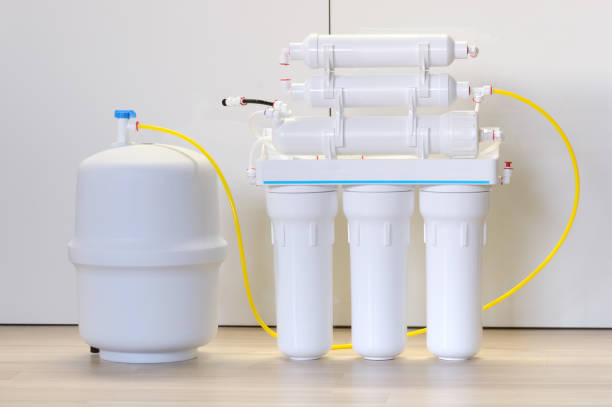
What Are Reverse Osmosis Water Filters?
Reverse osmosis (RO) water filter removes impurities from water using the reverse osmosis process. Water filters that use activated carbon, such as PUR and Berkey, are able to remove pollutants from water to make it safe and clean to drink.
The RO filter, sometimes known as a camper’s filter bottle, is used in many simple devices as a semipermeable membrane. Aerobic and anoxic granular media can be used within the same bioreactor or in conjunction with one another. The use of both aeration and anoxia reduces suspended solids to a minimum, allowing for low-cost filtration systems, such as DAFTAR filters. Due to the time, it takes for the membrane to
On average, sink-top filters, comprehensive home systems, and under-sink systems are used.
Also read: https://www.waterdropfilter.com/blogs/buyers-guides/ro-water-filter-guideline
How Does Reverse Osmosis Work?
The process of reverse osmosis is the basis for RO filters, which are also used to filter water. When a solvent from a low concentration area travels to a high concentration region through a permeable membrane, osmosis occurs. Reverse osmosis, on the other hand, is the opposite of osmosis. During the process, hydrostatic pressure drives the solvent from a high concentration to a low concentration area.
In simpler words, reverse osmosis can be explained in the context of water filtration.
During reverse osmosis, the contaminated water is pushed toward the other side of the membrane by pressure from the saltwater. The membrane’s pores are usually small (sometimes even smaller than a human red blood cell at 0.0001 microns) such that only pure water molecules can pass through. Pollutants are eliminated and washed away when wastewater is generated.
In the event that your RO filter is not yet replaced, do so as quickly as possible. They are quite effective at eliminating water contaminants. The filters can remove more than 90% and up to 99.99% of contaminants, including heavy metals like lead, nickel, and mercury. Furthermore, RO filters can remove algae, bacteria, viruses, hormones, pesticides, and herbicides.
Although reverse osmosis filters do not need electricity for operation, they need a stable feed water pressure for forcing the pure water through the membrane. RO filters, on the other hand, won’t function properly with weak water pressure.
RO filters also need a lot of water for rinsing away pollutants, and each little quantity of pure water adds to the amount of waste. The most sophisticated systems, which include permeate pumps, have purity water to waste ratio of 1:1. Also, always check the mileage of your RO system; mileage varies across different systems, and it is best to get highly efficient systems.
Why Do You Need A Water Filter?
You’ve come here for a variety of reasons, including the desire for safe, healthful drinking water for yourself and your family or interest in different water filtration systems.
Unfortunately, tap water is no longer safe even if you have high-quality city or well water. Also, there is no guarantee that bottled water is better than tap water.
The Environmental Working Group’s (EWG) tap water database reports that 81% of Americans drinking water contain carcinogenic contaminants. Also, 77% of Americans drink hexavalent chromium – the “Erin Brockovich” chemical. Furthermore, water samples from all 50 states contain arsenic, chromium-6, disinfection byproducts, and lead. You’ve come here for a variety of reasons, including the desire for safe, healthy drinking water for yourself and your family or to learn about various water filtration systems.
The EWG recommends reverse osmosis water filters to filter drinking water effectively. RO filters can remove up to 99% of commonly dangerous water contaminants, including lead, arsenic, nitrites, nitrates, selenium, chromium, and fluoride. Filters can also remove permanently hazardous substances like PFAS, PFOA, and GenX. They also eliminate cadmium, radium, phosphate, barium, chlorine, barium, bacteria, viruses, cysts, and a slew of other stuff.
However, selecting your first water treatment system from the many reverse osmosis water filtering systems may be difficult.
If you don’t want to spend the money on a whole-house water filter, but still want clean drinking water, check out the rest of our RO water filter system reviews.
Before purchasing individual RO systems, you can check below for our reverse osmosis buying guide.
Read Dive is a leading technology blog focusing on different domains like Blockchain, AI, Chatbot, Fintech, Health Tech, Software Development and Testing. For guest blogging, please feel free to contact at readdive@gmail.com.
